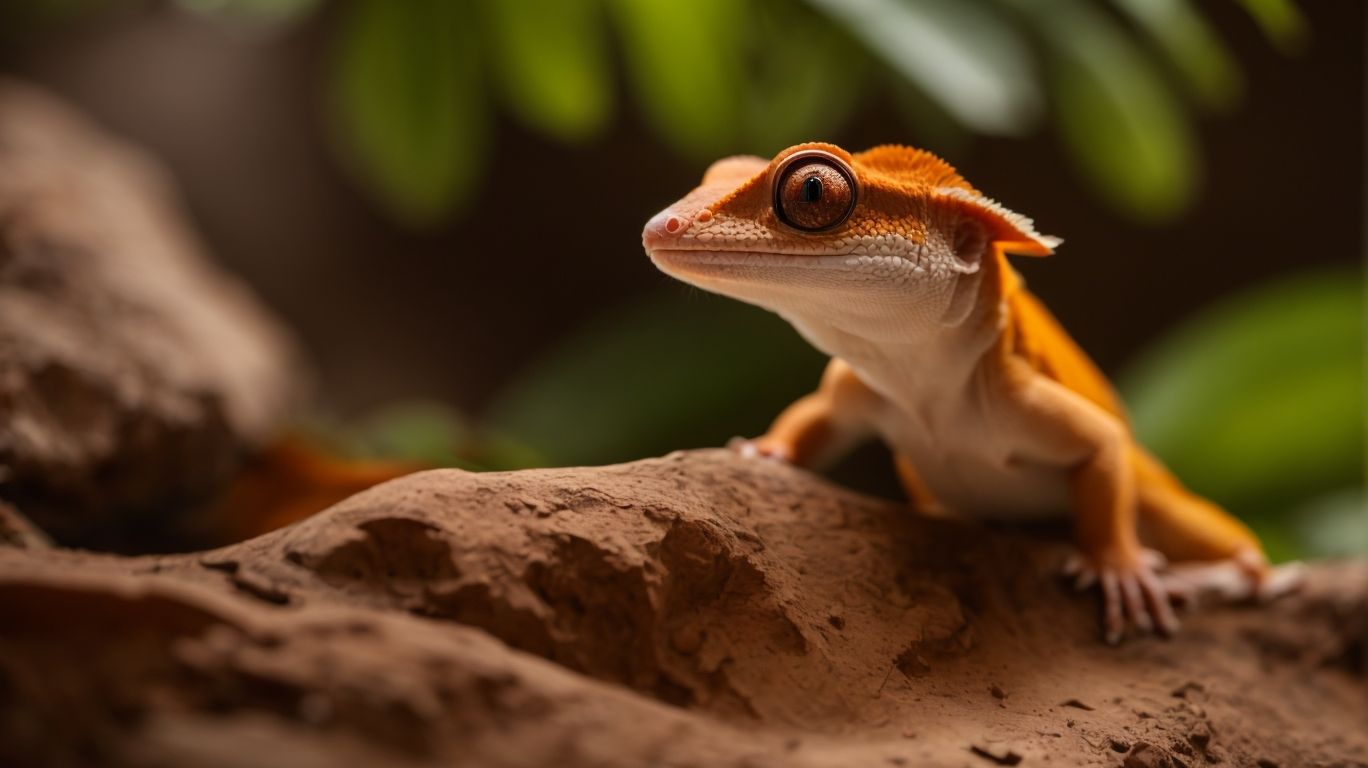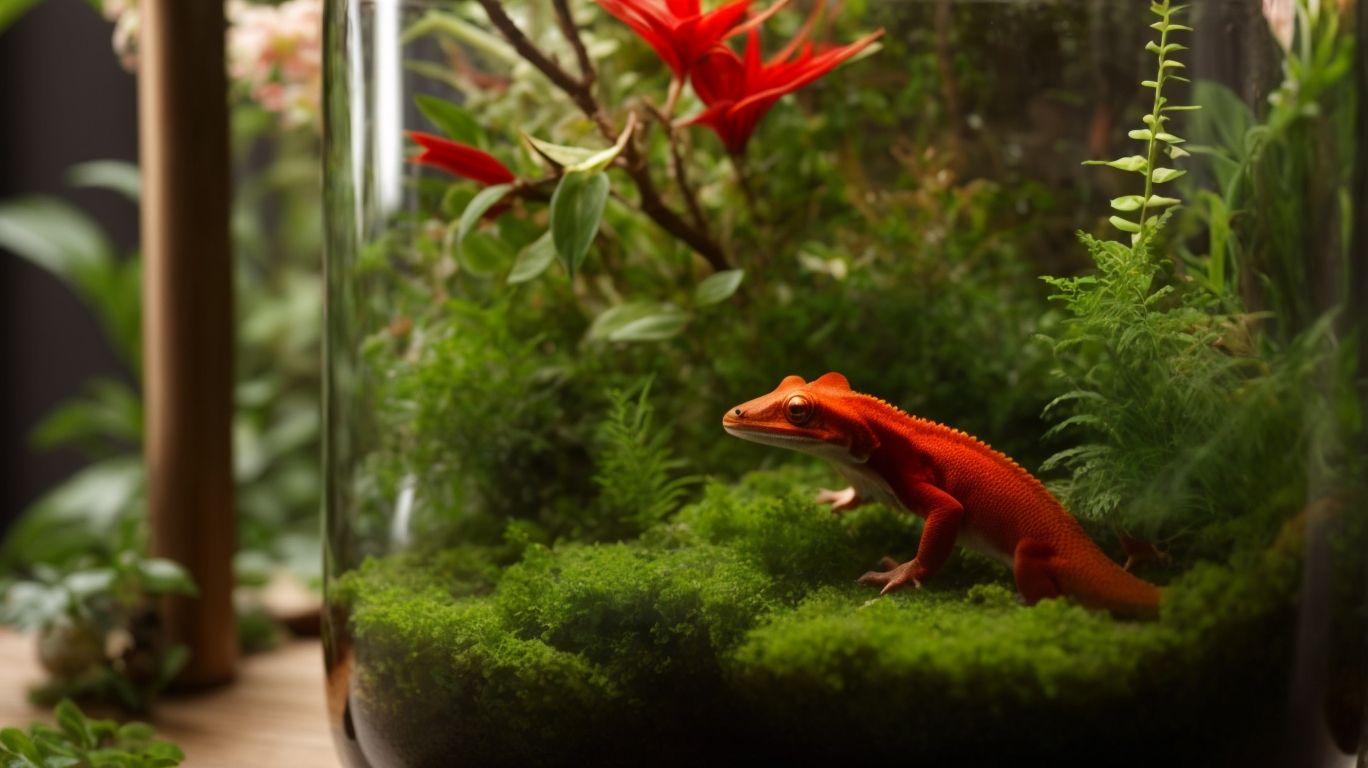
Crested Gecko Growth Stages: From Hatchling to Adulthood
Are you curious about the growth stages of a crested gecko? In this article, we will discuss the various stages of development for these fascinating reptiles, from hatching to maturity.
We will also cover the dietary and physical changes that take place during each stage, along with helpful care tips for your crested gecko at every phase of its growth. Whether you’re a beginner owner or an experienced reptile lover, this article will offer valuable information on the lifecycle of crested geckos.
What is a Crested Gecko?
The Crested Gecko, scientifically known as Correlophus ciliatus, is a fascinating reptile species renowned for its unique characteristics and captivating behavior.
This fascinating species is native to New Caledonia and has become a popular choice for reptile enthusiasts due to its striking appearance and relatively low maintenance.
Crested Geckos undergo a metamorphosis from egg to fully developed adult, with hatchlings emerging from their eggs after an incubation period of approximately 60-90 days. Their unique feature of having eyelids, sticky toe pads, and a prehensile tail makes them arboreal creatures preferring a habitat with vegetation and humidity. They are primarily nocturnal, displaying activity during the night, and are known for their ability to vocalize through chirping sounds. Their adaptability to various environmental factors and manageable care requirements make them an ideal choice for both novice and experienced reptile keepers.
What are the Growth Stages of a Crested Gecko?
Understanding the growth stages of a Crested Gecko is essential for providing optimal care and ensuring its well-being throughout its life cycle, from hatchling to maturity.
Hatchling Stage
The hatchling stage in a Crested Gecko’s life marks the initial phase of growth, characterized by small size and rapid developmental changes as it adapts to its environment.
During this stage, Crested Geckos are typically between 2 to 4 inches in length, with their diet consisting of small insects, fruit, and nectar. Their bodies undergo significant changes, developing their iconic crests and tail prehensile capabilities.
With their arboreal habitat, these hatchlings showcase impressive climbing and jumping abilities, enabling them to navigate through foliage with ease. This stage sets the foundation for their future development and displays the unique adaptations that make the Crested Gecko a fascinating reptile species.
Juvenile Stage
The juvenile stage of a Crested Gecko’s growth journey signifies a period of increased activity, exploration, and behavioral maturation as it progresses towards adulthood.
During this stage, juvenile Crested Geckos often exhibit a voracious appetite as they actively hunt for food and demonstrate improved hunting skills. They also show a growing curiosity towards their environment, frequently climbing and jumping to explore their surroundings.
As they mature, their coloration and patterns become more pronounced, representing the diverse range of morphs and traits within the species. Their social interactions with other geckos and their response to human interaction tend to evolve, reflecting their growing independence and confidence.
Sub-Adult Stage
As Crested Geckos enter the sub-adult stage, they undergo significant physical changes and approach reproductive maturity, reflecting their transition towards adulthood.
During this phase, their size and weight increase noticeably, with males becoming visibly bulkier and females developing a broader body frame. Their crests and dorsal spines also begin to develop more pronounced and defined shapes, signifying their approaching reproductive readiness.
Their vibrant colorations intensify, and their patterns become more distinct, showcasing their transition from juveniles to mature adults. These transformations are clear indicators of their readiness to enter the next stage of their life cycle.
Adult Stage
The adult stage represents the peak of maturity in Crested Geckos, marking the onset of reproduction and the consolidation of their unique characteristics throughout their lifespan.
At this stage, adult Crested Geckos showcase vibrant and distinct coloration, further enhancing their appeal to enthusiasts.
Their reproductive behavior becomes prominent, with females laying eggs multiple times per year, requiring appropriate nesting spots and environmental conditions.
Long-term care for adult Crested Geckos involves maintaining optimal humidity levels, providing a balanced diet, and ensuring ample space within their enclosure for physical activity.
With proper care, adult Crested Geckos can live up to 15-20 years, making them prized companions for reptile enthusiasts.
What do Crested Geckos Eat at Each Growth Stage?
Understanding the dietary requirements of Crested Geckos at each growth stage is vital for promoting their health, growth, and overall well-being throughout their developmental journey.
Hatchling Stage Diet
During the hatchling stage, Crested Geckos require a specialized diet rich in protein, calcium, and vitamins to support their rapid growth and development as they adjust to their new environment.
Their diet should mainly consist of gut-loaded insects such as crickets, roaches, and mealworms. It’s important to ensure that these prey items are dusted with calcium and vitamin supplements before being offered to the hatchlings.
Additionally, providing a variety of fruit-based baby food or specially formulated crested gecko diet can help meet their nutritional needs. It’s crucial to monitor their intake and make adjustments as needed to ensure they receive the necessary nutrients for healthy development.
Juvenile Stage Diet
As Crested Geckos progress into the juvenile stage, their dietary needs shift towards a balanced diet incorporating protein, fruits, and insects to support their energy requirements and overall development.
At this stage, juvenile Crested Geckos require a diverse menu to ensure optimal growth and health. Protein sources such as gut-loaded insects and powdered supplements are essential for muscle development and tissue repair.
Fruits play a crucial role by providing vital vitamins and minerals. Ensuring a balanced diet during this stage is key to fostering their wellness and setting the foundation for their adult dietary requirements.
Sub-Adult Stage Diet
Sub-adult Crested Geckos benefit from a diet that integrates essential nutrients, gut-loaded insects, and calcium supplements to support their continued growth and prepare them for adulthood.
At this stage, focusing on a well-rounded diet is crucial to ensure the development of strong bones and overall health.
It’s important to provide a variety of gut-loaded insects such as crickets, roaches, and mealworms to meet their protein requirements. Dusting the insects with calcium powder and vitamin supplements can help bridge any nutritional gaps. This approach strengthens their immunity and lays the foundation for a smooth transition into adulthood.
Adult Stage Diet
Adult Crested Geckos require a balanced diet that includes a variety of insects, fruits, and supplements to support their nutritional needs, reproductive health, and long-term well-being.
Geckos require a diverse feeding regimen to obtain essential nutrients like calcium, vitamin D3, and gut-loaded insects. This can be achieved by including a variety of fruits such as figs, mangoes, and bananas in their diet. These fruits provide necessary vitamins and minerals for their overall health.
In addition to fruits, it’s important to offer a rotation of insects such as crickets, dubia roaches, and mealworms. This mimics their natural diet and helps maintain their optimal body condition for reproduction.
What are the Physical Changes During Each Growth Stage?
The growth stages of Crested Geckos are accompanied by distinct physical changes that reflect their developmental progression, size variations, and adaptive transformations.
Hatchling Stage Changes
Hatchling Crested Geckos experience notable physical changes, including rapid growth, size increase, and the development of distinct markings as they acclimate to their surroundings.
The rapid development of geckos is evident in the way their size adjusts in just a matter of weeks. These young geckos gain considerable weight and length as they mature. Their unique markings begin to emerge, showcasing intricate patterns and vibrant colors. As they continue to grow, their once delicate and translucent skin transforms into a more robust and textured exterior. This reflects their progression from hatchling to juvenile stage, making for a fascinating journey to witness.
Juvenile Stage Changes
During the juvenile stage, Crested Geckos undergo physical changes such as increased size, coloration enhancement, and behavioral adaptations reflective of their transition towards maturity.
As juveniles mature, their size increases significantly, with their bodies developing a more robust and prominent build. The coloration of their skin becomes more vibrant and defined, showcasing intricate patterns and hues that continue to intensify as they approach adulthood.
In terms of behavioral adaptations, juveniles demonstrate improved hunting skills and greater agility, allowing them to actively explore their environment. These changes are essential for their survival and successful transition into the adult phase of their life cycle.
Sub-Adult Stage Changes
Sub-adult Crested Geckos exhibit pronounced physical changes, including size maturation, crest development, and behavioral shifts indicative of their approaching adulthood and reproductive readiness.
During this stage, their size increases significantly, with sub-adults reaching their full adult length of 6 to 8 inches, and their tails become thicker and more substantial.
The crests along their backs and heads become more distinct, showing vibrant colors and patterns. Sub-adult Crested Geckos start exhibiting territorial behavior, marking their territories and showing increased interest in potential mates, as they prepare for the next stage of their life cycle.
Adult Stage Changes
Adult Crested Geckos undergo definitive physical changes, including reproductive maturity, color stability, and the consolidation of their unique traits, marking the peak of their growth and development.
During this crucial growth stage, adult Crested Geckos exhibit remarkable color stability, with their vibrant patterns and hues becoming more pronounced and persistent. Their reproductive readiness is evident through the development of prominent bulges near the base of their tail, indicating their potential to engage in mating behavior.
Their unique traits, such as the distinct crests and the iconic eye structure, become more defined and consolidated, emphasizing their mature and distinct physical characteristics.
How to Care for a Crested Gecko at Each Growth Stage?
Providing optimal care for Crested Geckos at each growth stage is paramount to their well-being, encompassing habitat setup, health monitoring, and specialized attention tailored to their developmental needs.
Hatchling Stage Care
Caring for hatchling Crested Geckos entails providing a secure, appropriately-sized enclosure, regular health assessments, and a diet conducive to their rapid growth and adaptation.
Their enclosure should have ample hiding places, such as plants, vines, and branches, to provide a sense of security.
Monitoring their health includes checking for any signs of stress, maintaining appropriate humidity levels, and ensuring they have access to clean water.
The diet should consist of appropriately sized insects and a high-quality crested gecko diet, supplemented with calcium and vitamins.
As they grow, it’s essential to gradually introduce more variety in their diet to support their development.
Maintaining a consistent day-night cycle and providing environmental enrichment are crucial for their overall well-being.
Juvenile Stage Care
Caring for juvenile Crested Geckos involves providing an enriched environment, gentle handling, and nutritional support to facilitate their exploration, behavioral development, and overall well-being.
To ensure a healthy environment for young Crested Geckos, it’s important to provide plenty of climbing structures, hiding spots, and live plants that mimic their natural habitat. Additionally, gentle handling is crucial in helping them adjust to human interaction without causing stress.
Proper nutrition is also essential for their growth and well-being during this critical stage. This should include a varied diet consisting of live insects, fruit puree, and specialized gecko meal replacement powders.
Sub-Adult Stage Care
Providing care for sub-adult Crested Geckos requires attention to their health, balanced diet, and environment, aiming to support their physical development, reproductive readiness, and long-term vitality.
A well-rounded diet is crucial, including a variety of insects, fruit, and a specialized gecko diet. Environmental enrichment through the provision of climbing structures, hiding spots, and appropriate substrate is essential for their mental and physical stimulation.
Monitoring their health regularly for signs of illness and addressing any issues promptly is vital. This stage is pivotal for their development, as it prepares them for the transition into adulthood and potential reproductive activities, making careful care and attention significant for their overall well-being.
Adult Stage Care
Caring for adult Crested Geckos necessitates attention to their habitat maintenance, reproductive health, and overall well-being, ensuring a sustainable environment conducive to their long-term health and potential breeding.
This involves ensuring that their terrarium or vivarium is equipped with appropriate temperature gradients, humidity levels, and ample hiding spots, mimicking their natural habitat.
Monitoring their reproductive health is essential, providing proper nutrition, supplementation, and a stress-free environment to promote breeding success.
Implementing long-term well-being strategies, such as regular health check-ups, balanced diet, and environmental enrichment, helps support their overall health and longevity.




No Comments